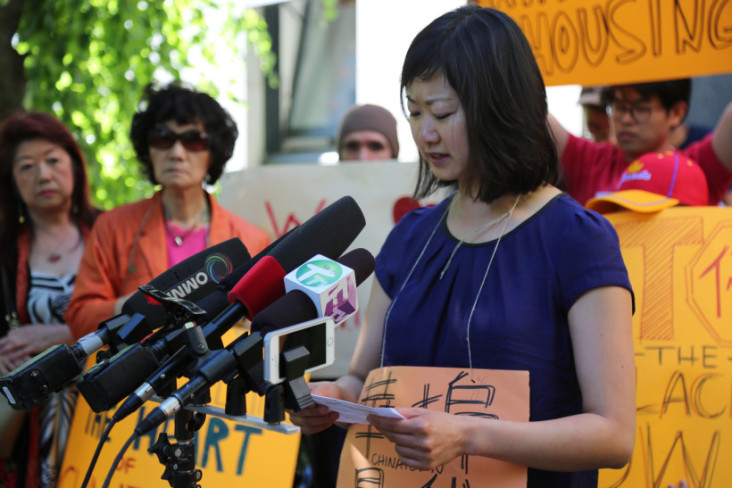By Steffanie Ling and Jannie Leung, on December 7th, 2017
Jannie: I have a particular experience in Chinatown, like spending a lot of time here and this neighbourhood being an important part of both my childhood and my identity as a Chinese person. I also think of the different experiences for people living in this neighbourhood, and how painful it is to hear the stories of how seniors are impacted. I think the word gentrification sounds like such a fancy word, then at the heart of it, it devastates people’s livelihoods. Seeing people get evicted out of their homes, or hearing seniors talk about how it doesn’t feel like their neighbourhood anymore, or that they don’t feel like they belong or they’re welcome here. These are really painful stories to hear and I think about gentrification as a very violent process, even though the word kind of hides that. We can see what’s happening in Chinatown, right? We see these condos and the appropriation of culture, it’s enraging and painful. And also on top of that is the way the neighbourhood is being cleansed. The city never wanted Chinatown to exist, and also I think people outside of Chinatown didn’t want it to exist. It’s always been seen as a slum, and there have been other attempts of slum-clearance and this is the latest one. It’s been pretty strong in this neighbourhood.
Materially speaking, you see low income people — not just Chinese, because there’s a lot of poor white people and Indigenous people who are part of the community — getting pushed out of the neighbourhood. You already brought up art-washing, which is the insidious side of what’s happening. Andrei Mihailuk wrote a really great article about it recently. How I understand art-washing is that it’s a strategy; so it’s promoted by government and developers who are providing subsidies to arts and culture organizations/people to come into a neighbourhood…usually working class and racialized neighborhoods, where people are poor and the land values are usually depressed. That’s usually the first wave of gentrification, to make the neighbourhood seem more palatable to white middle-class people, right? What I often hear about Chinatown is that it’s a dangerous neighbourhood, it’s “sketchy,” people don’t want to come here. So the first phase is to bring arts and culture to make it more welcoming to potential home buyers. So it’s setting the stage for speculation, and for land values to increase.
I think the interesting thing about art-washing is that it denies that a culture existed here in the first place. On Gore and Pender there is the Lao Tzu mural, a really important figure in Chinese culture, and you just watch it get covered as that condo development gets built. Not only did that mural get covered but I just walked by and you now see that tattoo parlor, Black Medicine Tattoo, put these murals on top of [the construction site’s scaffolding] with these dragons and fans. It was just super offensive to me, because not only did they cover the mural, but [they’re] replacing it with art that appropriates the culture here.
Steff: And the [Lao Tzu] mural was also commissioned by the city in some sort of commemorative manner, wasn’t it? It was like, “150 years of Chinatown, here’s a mural, we’re gonna cover it up in five years with a condo!” That’s the narrative, right?







